Drone Safety: Tips for Operators and Bystanders
In recent years, drones have surged in popularity, transforming the way we capture aerial footage, conduct surveys, and even deliver packages. However, with great power comes great responsibility. Ensuring the safety of both drone operators and bystanders is paramount. This article provides essential safety tips for both drone operators and bystanders, ensuring safe flying practices and awareness of regulations to prevent accidents and injuries. Whether you’re a seasoned pilot or a curious onlooker, understanding the ins and outs of drone safety can make all the difference in enjoying this exciting technology.
Familiarizing yourself with local and national drone regulations is crucial for safe operation. Each country and region may have specific rules governing drone use, and being unaware of these can lead to serious legal repercussions. For instance, in the United States, the Federal Aviation Administration (FAA) has laid out clear guidelines that every drone operator must follow. These include restrictions on flying near airports, altitude limits, and requirements for registering your drone. Ignoring these regulations not only jeopardizes your safety but also that of others. Always check local laws and regulations before taking to the skies. Remember, knowledge is power!
Conducting thorough pre-flight safety checks can significantly reduce risks. Think of it like checking your car before a long road trip; you wouldn’t want to hit the highway without ensuring everything is in working order. This section details the essential checks operators should perform before launching their drones. A comprehensive checklist can be a lifesaver:
- Inspect the drone for physical damage.
- Ensure all equipment is properly secured.
- Check battery levels and charge status.
- Update firmware if necessary.
Regularly inspecting your drone's equipment ensures it functions properly. This is not just a good practice; it’s a necessity. A well-maintained drone is less likely to malfunction mid-flight. Key components to check include:
- Batteries: Ensure they are charged and free from damage.
- Propellers: Look for cracks or bends that could affect flight stability.
- Cameras: Ensure they are clean and functioning for optimal performance.
Proper battery maintenance extends flight time and enhances safety. An underperforming battery can lead to unexpected crashes. Here are some tips on charging, storing, and inspecting batteries before each flight:
- Charge batteries using the manufacturer’s recommended charger.
- Store batteries in a cool, dry place to prevent overheating.
- Inspect for swelling or leaks before each flight.
Ensuring your drone's propellers are in good condition is vital for safe flights. Damaged propellers can lead to instability and crashes. Regularly check for:
- Cracks or chips in the blades.
- Signs of wear and tear.
- Ensure they are securely fastened before takeoff.
Understanding weather conditions is essential for safe drone operation. Flying in adverse weather can lead to loss of control and accidents. Always check the forecast before flying. Factors to consider include:
- Wind speed and direction.
- Precipitation (rain, snow, etc.).
- Visibility and cloud cover.
Implementing safe flying practices minimizes risks for both operators and bystanders. Think of your drone as a powerful tool that requires respect and caution. Here are some practical tips for maintaining safety during flights:
Keeping your drone within visual line of sight is crucial for safe operation. This part explains the importance of situational awareness while flying. It’s easy to get lost in the excitement of flying, but remember, if you can’t see it, you can’t control it. Always keep your drone in your line of sight to avoid collisions and accidents.
Respecting the privacy of others is a key aspect of drone operation. This section discusses ethical considerations and legal implications regarding privacy during flights. Flying over private property without permission can lead to legal troubles. Always be mindful of where you fly and who might be affected by your drone’s presence.
Being prepared for emergencies can prevent accidents. Just like a pilot has a plan for emergencies, so should you. This section outlines essential procedures to follow in case of a drone malfunction or unexpected situation.
Understanding how to handle loss of control situations is critical. If your drone starts to drift or loses connection, stay calm. This subsection provides strategies for regaining control or safely landing your drone. Techniques such as switching to manual control or using the return-to-home feature can be lifesavers.
Knowing how to report accidents is important for accountability. If an incident occurs during drone operation, follow these steps:
- Document the scene and any damages.
- Notify local authorities if necessary.
- File a report with the relevant aviation authority.
Q: What should I do if my drone crashes?
A: First, assess the situation for any injuries or damages. Document the crash site and follow local regulations for reporting incidents.
Q: Can I fly my drone at night?
A: Night flying is allowed in some regions, but you must have appropriate lighting and follow local regulations.
Q: How can I ensure I’m flying in safe weather conditions?
A: Always check the weather forecast before flying and avoid windy or rainy conditions.
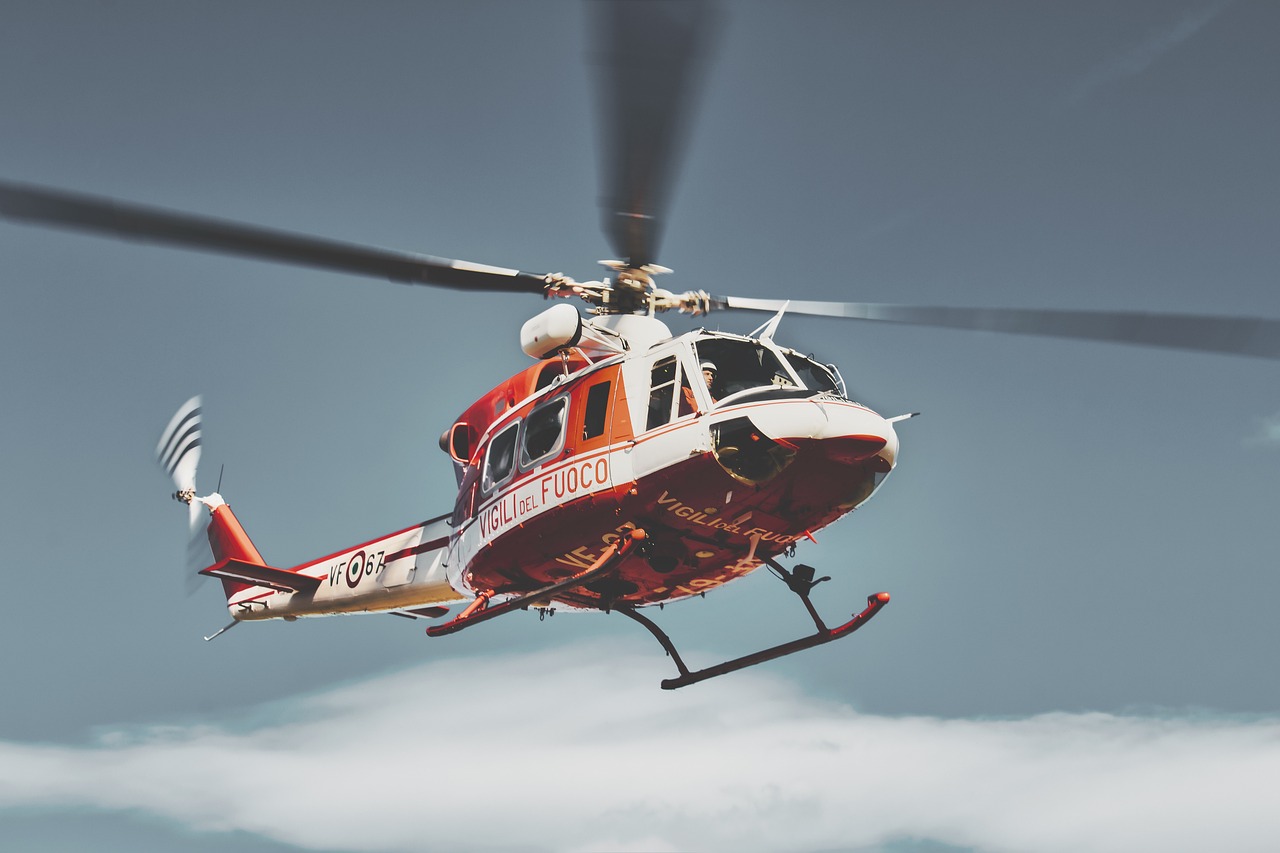
Understanding Drone Regulations
When it comes to flying drones, understanding regulations is not just a good idea—it's essential. Think of drone regulations as the rules of the road, but for the skies. Just as you wouldn't drive a car without knowing the traffic laws, operating a drone without being aware of the legal framework can lead to serious consequences, including fines and even criminal charges. In many countries, drone regulations are becoming more stringent as the popularity of these flying machines increases. Therefore, it's crucial for both novice and experienced operators to familiarize themselves with local and national laws governing drone use.
First and foremost, operators should be aware of the airspace classifications. In most regions, airspace is categorized into various classes, each with its own set of rules. For instance, Class G airspace is generally uncontrolled, meaning you have more freedom to fly your drone, while Class B, C, D, and E airspaces are controlled and often require specific permissions to operate. Understanding these classifications can help you avoid flying in restricted areas, which could lead to dangerous situations or legal penalties.
Another critical aspect of drone regulations is the registration requirement. In many jurisdictions, drones above a certain weight must be registered with the relevant aviation authority. This registration process often includes providing details about the drone and its operator, ensuring accountability in case of incidents. Failing to register your drone can result in hefty fines, so make sure to check your local laws to see if registration is necessary.
Additionally, drone operators must adhere to height restrictions. Most regulations cap the maximum altitude at which drones can fly, typically around 400 feet above ground level. This limitation is crucial for maintaining safe distances between drones and manned aircraft. Ignoring these restrictions can not only put your drone at risk but also endanger lives.
It's also vital to respect no-fly zones. These areas often include places like airports, military bases, and crowded public events. Flying in these zones can lead to severe consequences, including the potential for criminal charges. Therefore, it's advisable to use apps or tools that provide real-time information about no-fly zones in your area.
Lastly, always consider the ethical implications of your drone usage. Respecting the privacy of others is not just a legal obligation but a moral one as well. If you're capturing images or videos, make sure you have the consent of those being filmed, especially in private settings. The last thing you want is to become the subject of a privacy complaint!
In summary, understanding drone regulations is a multifaceted responsibility that every operator must take seriously. From knowing airspace classifications to adhering to registration and height restrictions, the rules are designed to ensure safe and responsible flying. So, before you take to the skies, make sure you’re well-versed in the regulations that apply to you!
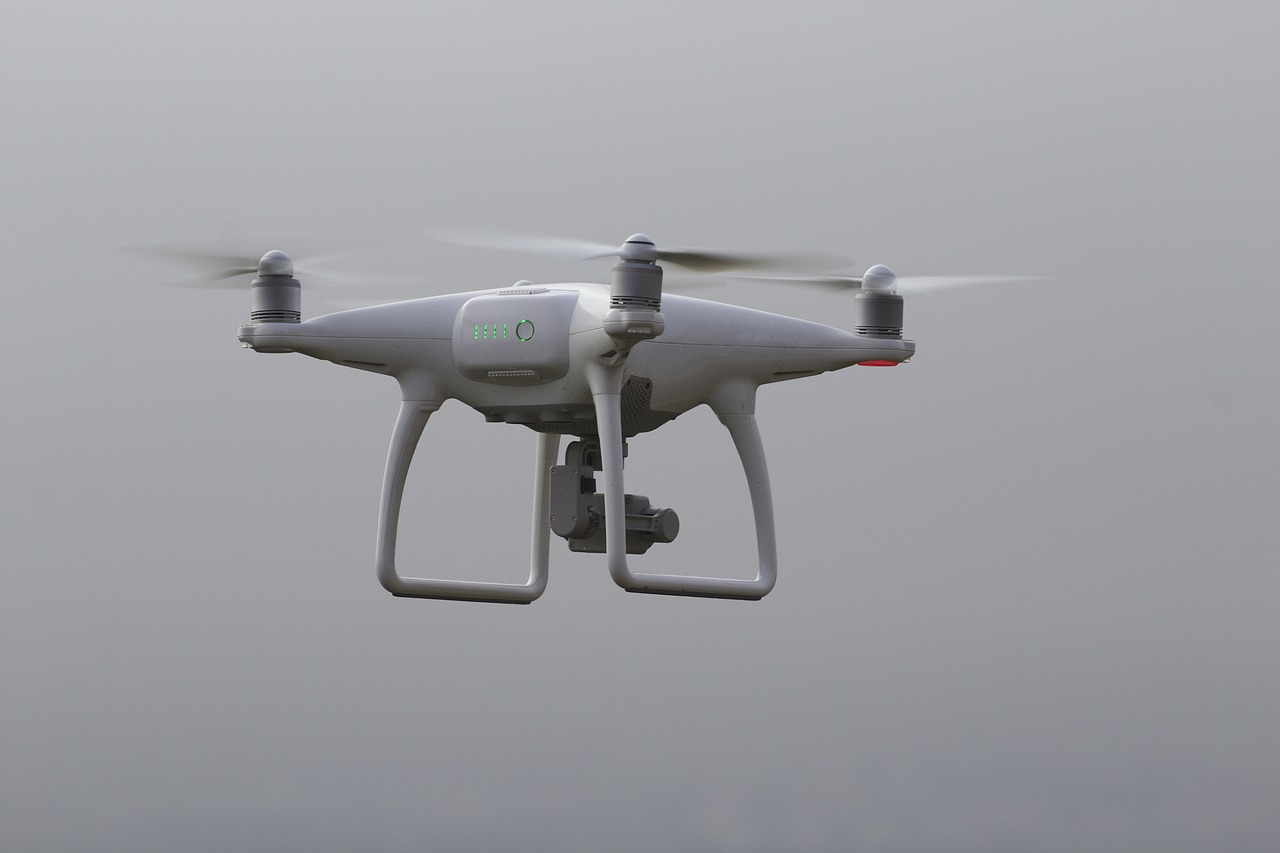
Pre-Flight Safety Checks
Before you take to the skies with your drone, it's absolutely crucial to conduct . Think of it as a pilot's checklist—ensuring that everything is in tip-top shape can prevent a lot of headaches later on. Imagine gearing up for an epic road trip without checking your car; you wouldn't want to break down in the middle of nowhere, right? It's the same with drones! Conducting a thorough inspection can significantly reduce risks and make your flying experience enjoyable and safe.
First and foremost, you should perform an equipment inspection. This means checking all the essential parts of your drone, including the batteries, propellers, and cameras. Just like a chef wouldn’t start cooking without checking their ingredients, a drone operator shouldn’t launch without ensuring their gear is ready for action. If any component is malfunctioning, it could lead to disastrous outcomes. Regular inspections can save you from unexpected mishaps.
When inspecting your drone, start with the batteries. Proper battery maintenance not only extends flight time but also enhances safety. Always check the battery's charge level before each flight. If it’s running low, it’s better to recharge than to risk a mid-air shutdown. Additionally, inspect the batteries for any signs of damage, like swelling or corrosion. A healthy battery is the heart of your drone, so treat it with care!
While we're on the topic of batteries, let’s dive deeper into battery maintenance. Make sure to follow these simple tips:
- Charging: Use the charger that came with your drone and avoid overcharging.
- Storing: Keep batteries in a cool, dry place, ideally at around 50% charge for long-term storage.
- Inspecting: Check for any physical damage before each flight.
By adhering to these guidelines, you can ensure that your drone's power source is reliable and ready for action.
Next up, let’s talk about the propellers. These are your drone's wings, and they need to be in excellent condition for a safe flight. Before each flight, thoroughly check your propellers for any signs of damage or wear, such as cracks or chips. If they look like they’ve seen better days, it’s time to replace them. Think of propellers as the tires of a car; if they’re not in good shape, you're asking for trouble. A quick inspection can save you from a crash landing!
Finally, never underestimate the impact of weather conditions on your flight. Always check the weather forecast before heading out. Wind, rain, and even temperature can affect how your drone performs. For instance, flying in gusty winds can make it challenging to control your drone, and moisture can damage sensitive electronics. A good rule of thumb is: if the weather seems iffy, it's best to postpone your flight. After all, safety should always come first!
In conclusion, performing pre-flight safety checks is not just a recommendation; it's a necessity for every drone operator. By ensuring that your equipment is in perfect condition and considering external factors, you can enjoy a smooth and safe flying experience. Remember, a little preparation goes a long way!
Q: How often should I perform pre-flight checks?
A: It's best to perform pre-flight checks before every flight to ensure optimal safety.
Q: What should I do if I find damage during my inspection?
A: If you find any damage, do not fly your drone until you have repaired or replaced the damaged parts.
Q: Can I fly my drone in bad weather?
A: It's generally not advisable to fly in bad weather conditions such as high winds, rain, or snow.
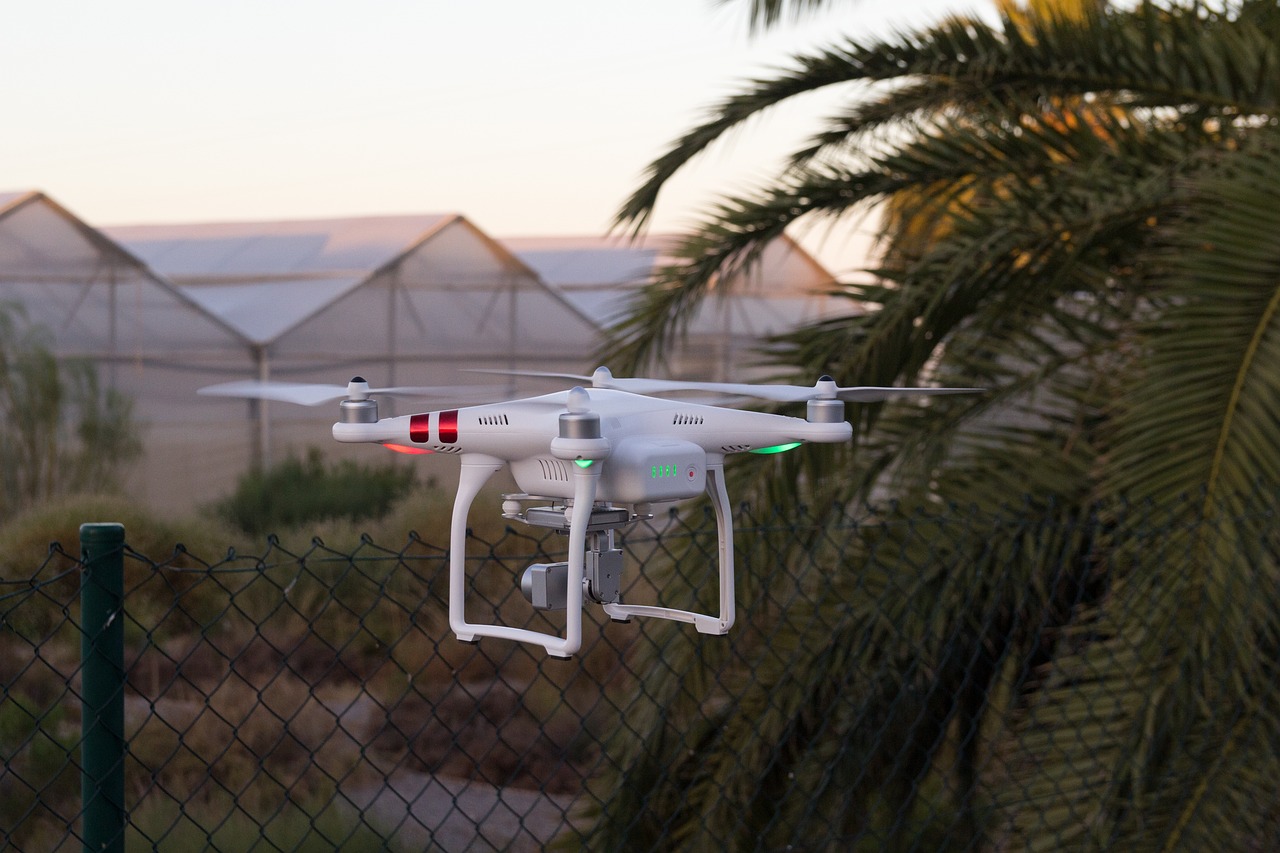
Equipment Inspection
When it comes to flying drones, is not just a good practice; it's a necessity. Think of your drone as a high-tech bird that needs to be in peak condition to soar through the skies. Before you even think about launching your drone, taking the time to conduct a thorough inspection can save you from potential disasters. Imagine you're about to take a road trip; you wouldn't hit the road without checking your tires, oil, and brakes, right? The same logic applies to drones.
First and foremost, let’s talk about the batteries. These little powerhouses are what keep your drone airborne, and if they’re not in good shape, you might find yourself watching your drone plummet from the sky. Always check for any signs of swelling or damage. A simple visual inspection can go a long way. Make sure to charge your batteries fully before each flight, and don’t forget to have a backup battery on hand just in case. After all, it’s better to have it and not need it than to need it and not have it!
Next up are the propellers. These are the spinning blades that allow your drone to lift off the ground. A damaged or worn propeller can lead to unstable flight and, in the worst-case scenario, a crash. Inspect each propeller for cracks, chips, or any signs of wear. If you notice any issues, it's best to replace them before taking to the skies. You wouldn’t drive a car with a flat tire, so why would you fly a drone with faulty propellers?
Another crucial component to inspect is the camera. If your drone is equipped with a camera, ensure that it is clean and functioning properly. A dirty lens can ruin your aerial photography, and malfunctioning hardware can lead to unexpected issues mid-flight. Take a moment to wipe the lens with a microfiber cloth and check the camera settings before launch.
In summary, a comprehensive equipment inspection can be broken down into three main areas:
- Batteries: Check for damage and ensure they are fully charged.
- Propellers: Look for cracks or chips and replace if necessary.
- Cameras: Ensure cleanliness and functionality.
By incorporating regular equipment inspections into your pre-flight routine, you’re not just ensuring the safety of your drone but also enhancing your overall flying experience. Remember, a well-maintained drone is a happy drone, and a happy drone is one that keeps you flying high!
Q: How often should I inspect my drone's equipment?
A: It's recommended to conduct an inspection before every flight. Regular checks help identify issues early and ensure a safe flying experience.
Q: What should I do if I find damage during an inspection?
A: If you find any damage, such as cracked propellers or swollen batteries, it's best to replace those parts before flying again.
Q: Can I fly my drone if the battery is only partially charged?
A: While it’s technically possible, flying with a partially charged battery increases the risk of losing power mid-flight. Always fly with a fully charged battery.
Q: Is it necessary to inspect the camera before every flight?
A: Yes, ensuring your camera is clean and functional is important for capturing quality footage and for the overall performance of your drone.
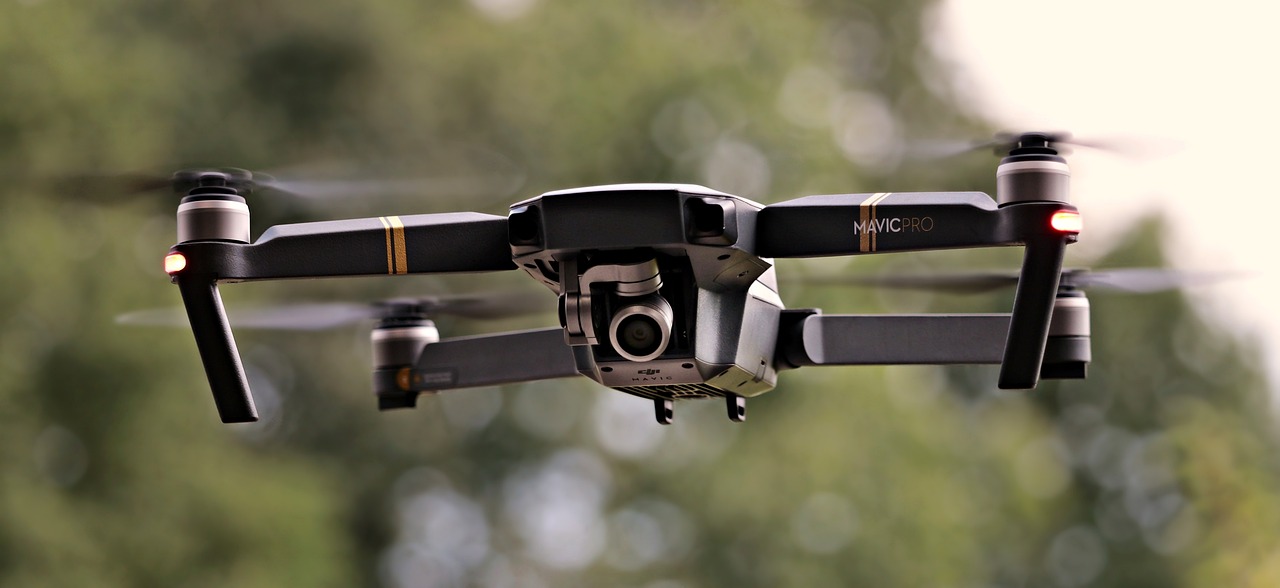
Battery Maintenance
Proper is not just a good practice; it's a crucial aspect of drone operation that can significantly enhance both flight time and safety. Think of your drone's battery as its lifeblood; without it, your drone is just a hunk of plastic and metal. So, how do you ensure that this vital component is always in top shape? First and foremost, it's essential to charge your batteries correctly. Overcharging can lead to reduced battery life and even dangerous situations. Always use the charger that comes with your drone, as third-party chargers might not have the same safety features.
When it comes to storing your batteries, temperature plays a critical role. Ideally, you should keep them in a cool, dry place. Extreme temperatures can affect battery performance and longevity. For instance, storing batteries in a hot car could lead to swelling or even bursting. On the flip side, cold temperatures can reduce the battery's capacity. Therefore, consider using a battery storage case that offers insulation and protection from the elements.
Before each flight, it’s essential to inspect your batteries for any signs of damage. Look for bulges, leaks, or corrosion. If you notice any of these issues, it’s time to replace the battery. Remember, a faulty battery can not only ruin your day but also pose serious safety risks. It's better to be safe than sorry! Additionally, you should keep track of how many cycles your battery has gone through. Most batteries have a limited number of charge cycles, and exceeding this limit can lead to performance issues.
Finally, always remember to discharge your batteries properly after use. If you plan to store your batteries for an extended period, it's advisable to discharge them to around 40-60% capacity. This practice helps to prolong their lifespan and ensures that they remain in good working condition for your next flight. In summary, diligent battery maintenance can make all the difference between a smooth flying experience and a potential disaster.
By following these simple yet effective maintenance tips, you can ensure that your drone remains airborne and your flights are safe and enjoyable. After all, who wouldn’t want to enjoy the thrill of flying without the nagging worry of battery failure?
- How long do drone batteries typically last?
Most drone batteries last between 20 to 30 minutes of flight time, depending on the model and conditions. - Can I use any charger for my drone batteries?
No, it's crucial to use the charger that is specifically designed for your drone's battery to avoid damage and ensure safety. - What should I do if my battery starts to swell?
If you notice swelling, stop using the battery immediately and dispose of it according to local regulations. - How can I extend the life of my drone batteries?
By following proper charging, storage, and maintenance practices, you can significantly extend the lifespan of your batteries.
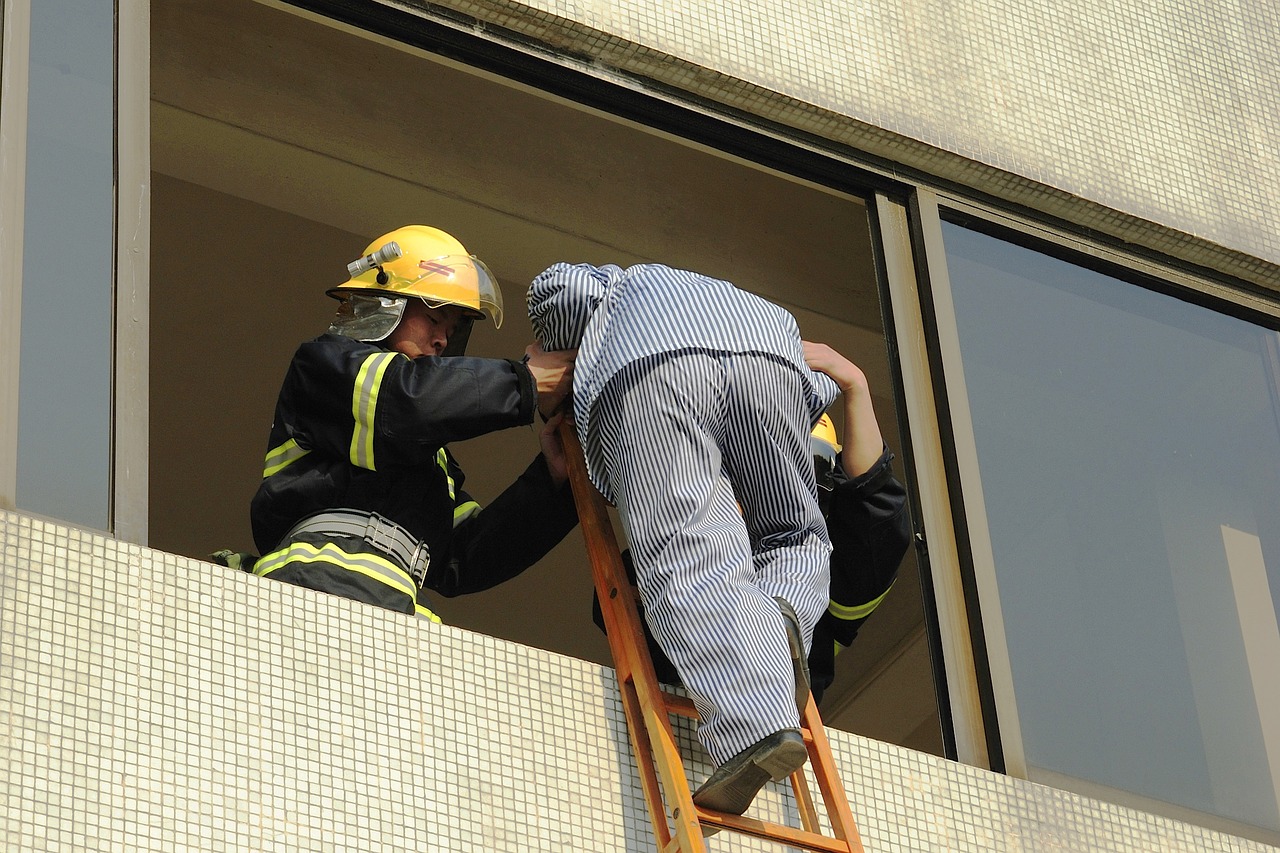
Propeller Condition
When it comes to drone safety, the condition of your propellers plays a pivotal role. Think of your drone's propellers as the wings of a bird; if they're damaged or worn out, your drone's ability to fly smoothly is compromised. Regular inspections of your propellers are not just a recommendation—they're a necessity. Before every flight, take a moment to carefully examine each propeller for any visible signs of damage. This includes looking for cracks, chips, or any deformation that could affect performance.
Moreover, it's important to understand that propellers can wear out over time due to exposure to various environmental factors. For instance, flying in harsh conditions such as high winds or sandy areas can lead to quicker degradation. To ensure optimal performance, consider the following checklist:
- Visual Inspection: Look for any physical damage on the blades.
- Balance Check: Ensure that the propellers are balanced; unbalanced propellers can lead to erratic flight behavior.
- Secure Attachment: Make sure all propellers are securely attached to the drone; loose propellers can result in catastrophic failures.
In addition to these checks, it’s wise to replace propellers that have been used extensively or show signs of wear. Many drone operators opt to keep a spare set of propellers on hand, just in case. This proactive approach not only enhances safety but also ensures that you’re always ready for an impromptu flight. Remember, a small crack can lead to significant problems in the air, so it’s better to be safe than sorry.
To wrap things up, maintaining the condition of your drone's propellers is not just about keeping your equipment in top shape; it’s about ensuring the safety of everyone around you. Just like you wouldn't drive a car with worn-out tires, you shouldn't fly a drone with damaged propellers. Regular checks and replacements can make all the difference in providing a safe flying experience for both you and bystanders.
- How often should I check my drone's propellers? It's recommended to inspect your propellers before every flight to ensure they are in good condition.
- What are the signs that my propellers need to be replaced? Look for visible damage such as cracks, chips, or any signs of wear that could affect flight performance.
- Can I fly with damaged propellers? No, flying with damaged propellers is highly discouraged as it can lead to loss of control and accidents.
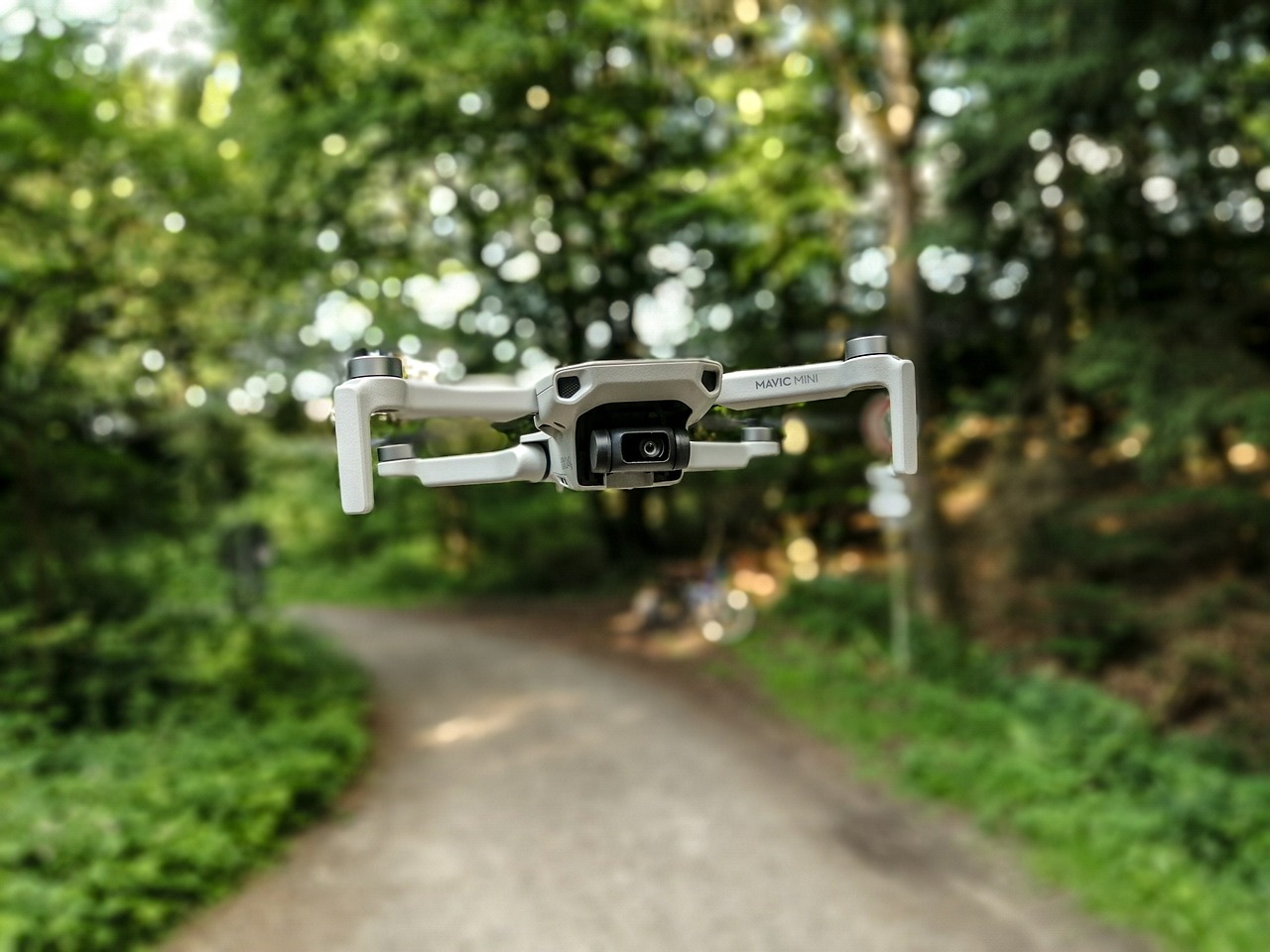
Weather Considerations
When it comes to flying drones, weather conditions play a pivotal role in ensuring a safe and successful flight. Just like a sailor checks the forecast before setting sail, drone operators must be vigilant about the weather. Factors such as wind speed, precipitation, and visibility can dramatically affect the performance of your drone. For instance, strong winds can make it challenging to control your drone, leading to potential crashes or loss of control. Therefore, before you even think about launching your drone, take a moment to assess the weather.
Start by checking the wind speed. Ideally, you want to fly when the wind is calm, typically under 10 mph. Flying in windier conditions can be particularly tricky, especially for smaller drones that may struggle against stronger gusts. If you notice the wind picking up, it’s best to postpone your flight. Additionally, pay attention to the temperature. Extreme cold can affect battery performance, reducing flight time and potentially leading to unexpected shutdowns. On the flip side, excessive heat can cause overheating issues.
Another crucial aspect to consider is precipitation. Flying in rain or snow not only poses risks to your drone but can also impair your visibility. Water can damage electronic components, and wet conditions can lead to slippery surfaces, making it harder for you to maintain control. If you must fly in less-than-ideal weather, ensure your drone is equipped with appropriate weatherproofing. Always check for any weather advisories or warnings in your area before heading out.
Lastly, visibility is key. If you can’t see your drone clearly, how can you control it? Fog, heavy rain, or even low-hanging clouds can obstruct your view, making it difficult to maintain line of sight. It’s not just about seeing your drone; it’s also about being aware of your surroundings. You wouldn’t want to accidentally fly into a tree or a power line because you couldn’t see them due to poor visibility. So, always make sure that conditions are clear enough to fly safely.
In summary, being mindful of weather conditions is not just a precaution; it’s a necessity for any responsible drone operator. By keeping an eye on wind speed, temperature, precipitation, and visibility, you can significantly reduce the risks associated with flying your drone. Remember, it’s better to wait for the right conditions than to risk your drone’s safety—after all, it’s worth it to fly another day!
- What is the ideal wind speed for flying a drone? Ideally, you should fly when the wind speed is below 10 mph to ensure better control.
- Can I fly my drone in the rain? It's best to avoid flying in rain as it can damage the drone's electronics and impair visibility.
- How does temperature affect drone performance? Extreme cold can reduce battery life, while excessive heat can cause overheating issues.
- What should I do if visibility is poor? If you can’t see your drone clearly, it’s best to postpone your flight until conditions improve.
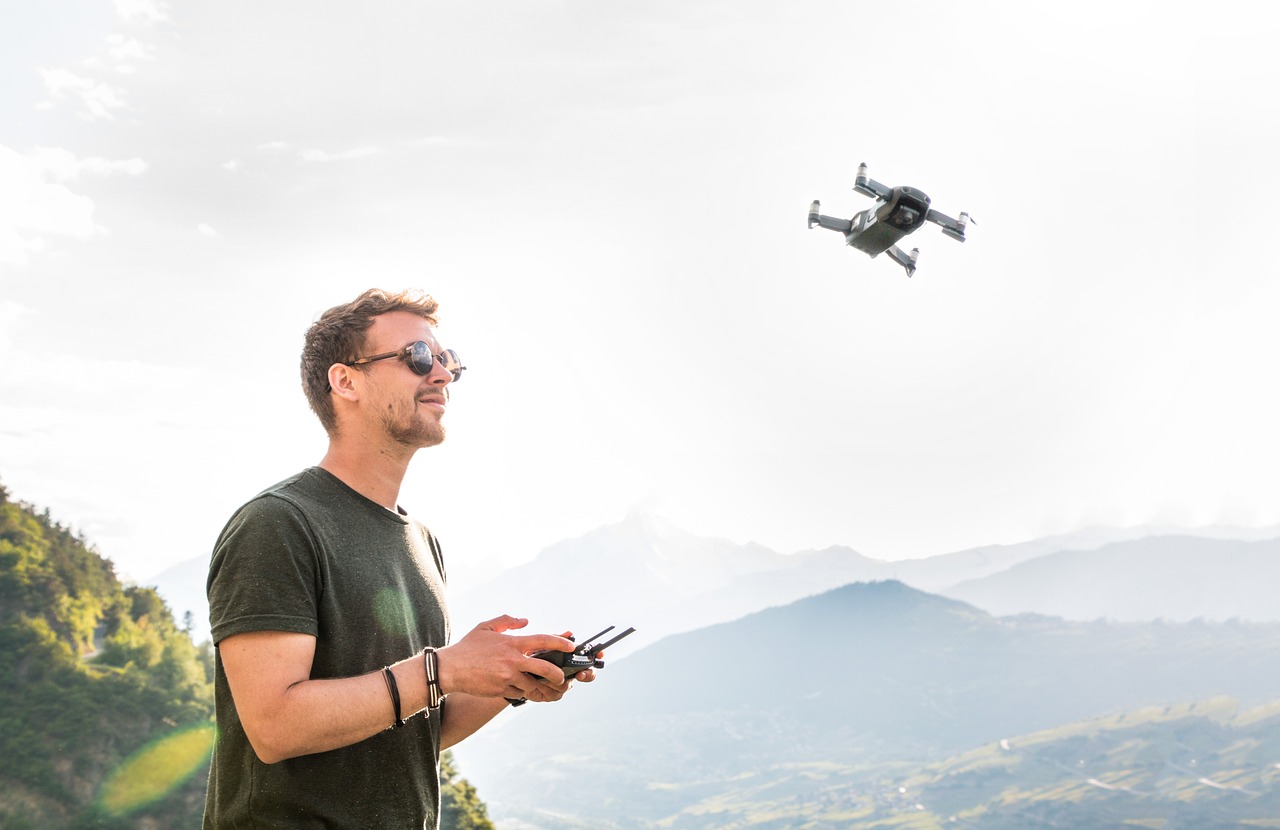
Safe Flying Practices
When it comes to flying drones, practicing safety is not just a recommendation; it's a necessity. Imagine soaring through the sky, the wind in your hair, and the world beneath you—sounds exhilarating, right? However, with great power comes great responsibility. Implementing minimizes risks not only for you as the operator but also for bystanders who might be enjoying their day nearby. So, how can you ensure that your drone flights are both thrilling and safe? Let’s dive into some essential practices that every drone enthusiast should adopt.
First and foremost, one of the most critical safety practices is to maintain a clear line of sight with your drone at all times. This means you should be able to see your drone without any visual obstruction. Why is this so vital? Well, it’s all about situational awareness. Keeping your drone within visual line of sight allows you to better anticipate any potential hazards, whether it's a tree branch, a building, or even other people. Think of it like driving a car; you wouldn’t want to take your eyes off the road, would you? The same logic applies to flying drones.
Another important aspect is to respect the privacy of others. Drones equipped with cameras can capture stunning aerial footage, but they can also inadvertently invade someone’s personal space. Before you take off, consider the areas you’ll be flying over. Are there homes nearby? Parks filled with people? It's crucial to be aware of the ethical and legal implications of flying your drone in public spaces. Not only does respecting privacy keep you on the right side of the law, but it also fosters goodwill among the community. After all, nobody likes to feel like they’re being watched!
Moreover, understanding your surroundings is pivotal for safe operations. Make it a habit to check for no-fly zones and other restrictions before you launch your drone. Local regulations can vary widely, and what might be permissible in one area could be illegal in another. For example, flying near airports or crowded events can lead to serious legal consequences. To help you navigate these regulations, consider creating a
| Location | No-Fly Zone Status | Notes |
|---|---|---|
| Airports | Yes | Always check for controlled airspace. |
| Parks | Varies | Check local laws; some parks allow drones, others do not. |
| Residential Areas | Considered | Respect privacy and be mindful of noise. |
Lastly, always be prepared for unexpected situations. As much as we’d like to believe everything will go smoothly, technology can be unpredictable. Familiarize yourself with emergency procedures, such as how to safely land your drone if you lose connection or if the battery is running low. It’s like having a fire escape plan; you hope you never need it, but it’s better to be safe than sorry!
In summary, practicing safe flying is about being proactive and considerate. By keeping your drone in sight, respecting the privacy of others, understanding local regulations, and preparing for emergencies, you can enjoy the thrill of flying without compromising safety. So, are you ready to take to the skies with confidence?
- What should I do if my drone loses signal? - Try to regain control by moving to a location where you have a better line of sight, and use the 'return to home' feature if available.
- Can I fly my drone in residential areas? - Yes, but be sure to respect the privacy of others and adhere to local regulations.
- What are the best practices for flying near crowds? - Avoid flying directly over people and maintain a safe distance to prevent accidents.
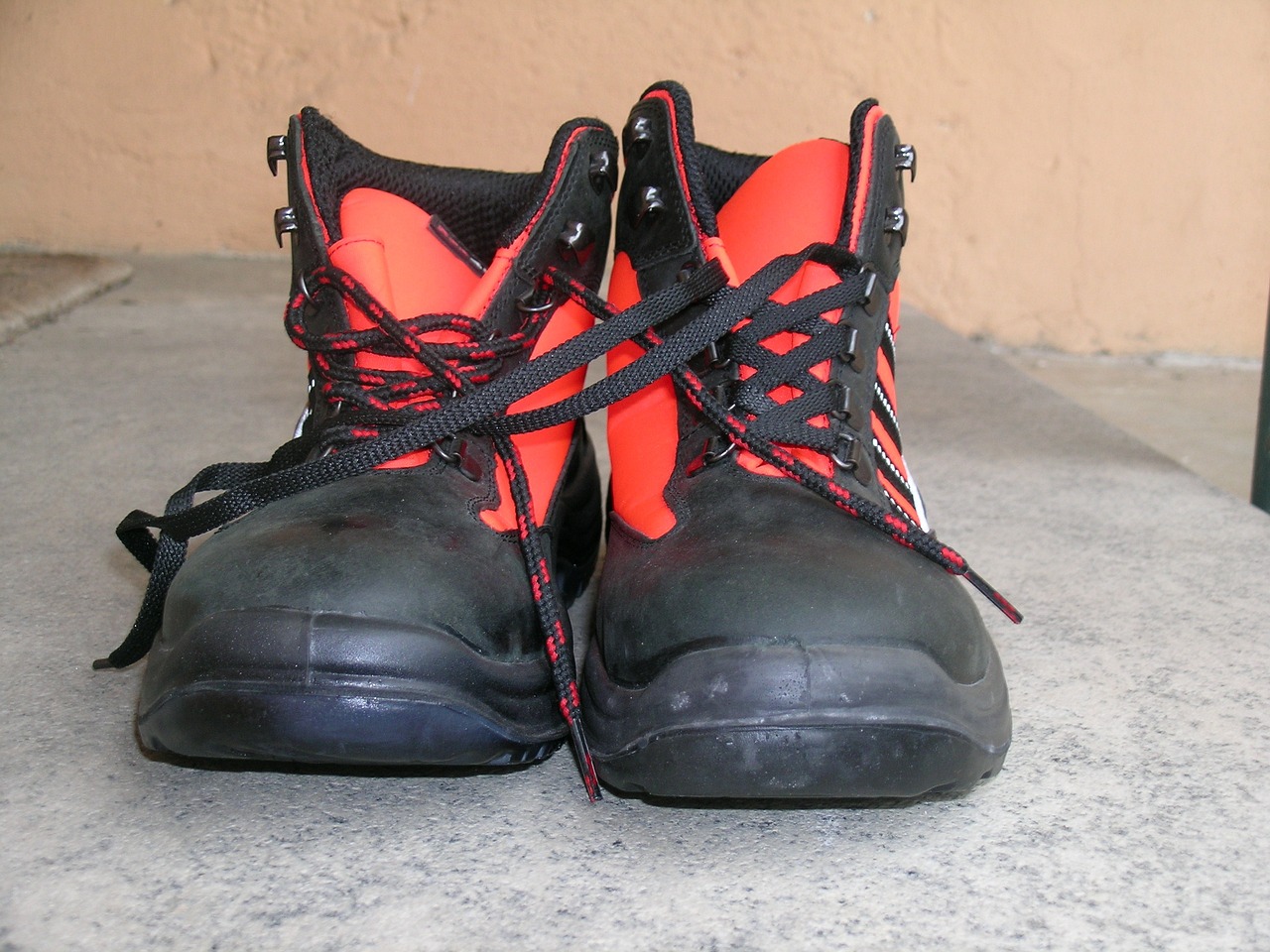
Maintaining Line of Sight
When it comes to flying drones, one of the most critical safety practices is maintaining a clear line of sight with your aircraft. This means that you should always be able to see your drone without the aid of binoculars or other visual enhancement tools. Why is this so important? Well, just like a driver needs to see the road ahead to avoid obstacles, a drone operator must have a clear view of their drone to ensure safe navigation and prevent accidents.
Imagine you're piloting your drone over a beautiful landscape, capturing stunning aerial shots. Suddenly, you lose sight of your drone behind a tree or building. Panic sets in, and your heart races as you frantically try to locate it. This scenario could easily be avoided by adhering to the line of sight rule. Keeping your drone within your visual range allows you to react quickly to any potential hazards, whether it’s a flock of birds, other aircraft, or even people below.
Additionally, maintaining line of sight helps you stay aware of your surroundings. You might be focused on your drone, but what about the people nearby? Being aware of bystanders and their proximity to your drone is crucial for safety. If you lose sight of your drone, you also lose awareness of how it might impact others in the area. To help you understand the importance of this practice, consider the following:
- Situational Awareness: Always know what’s happening around you.
- Obstacle Avoidance: Quickly identify and avoid obstacles in your drone’s flight path.
- Legal Compliance: Many regulations require operators to maintain visual contact with their drones.
In some cases, the environment can pose challenges to maintaining line of sight. For instance, flying in densely populated areas or near tall buildings can obstruct your view. To combat this, operators should choose open spaces for their flights, where they can easily see their drone from all angles. Moreover, using a spotter can be incredibly beneficial. A spotter is someone who assists the operator by keeping an eye on the drone while the operator focuses on piloting it. This teamwork not only enhances safety but also makes flying more enjoyable.
In conclusion, maintaining a line of sight is not just a best practice; it’s a fundamental aspect of safe drone operation. It ensures that you can react promptly to changes in your environment, protects bystanders, and keeps you compliant with regulations. So, the next time you take to the skies, remember: your eyes are your best tools!
Q: Why is maintaining line of sight important?
A: It allows you to react quickly to obstacles and ensures the safety of both your drone and those around you.
Q: Can I fly my drone out of sight if I have a camera?
A: No, even with a camera, you must maintain visual contact with your drone according to regulations.
Q: What should I do if I lose sight of my drone?
A: Try to regain visual contact as quickly as possible and consider using a spotter for future flights.
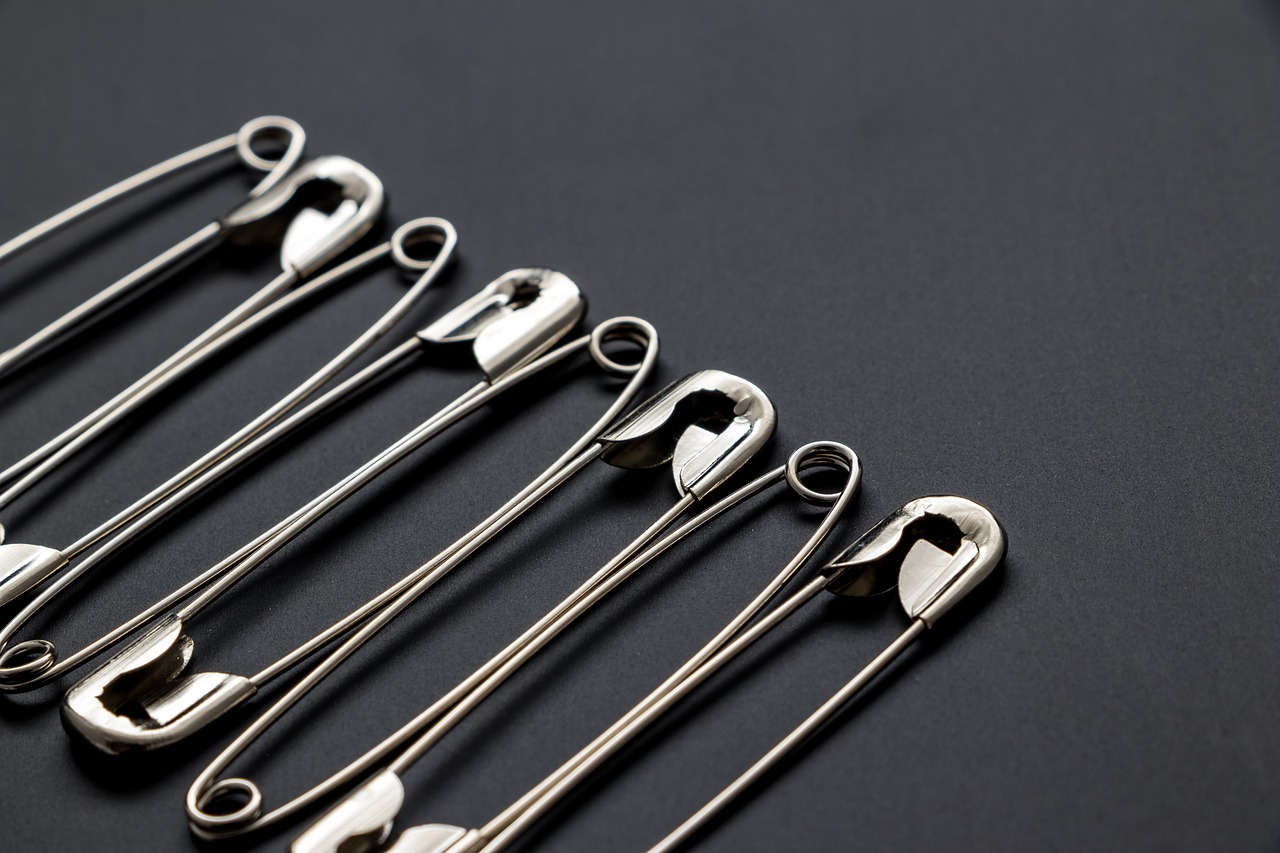
Respecting Privacy
When it comes to operating drones, respecting privacy is not just a courtesy; it's a legal obligation. Imagine flying a drone over someone’s backyard, capturing images of their private moments. It’s not only intrusive but can also lead to serious legal repercussions. As drone operators, we have to remember that with great power comes great responsibility. This means being aware of the boundaries that should never be crossed, both ethically and legally.
First off, it’s essential to understand that privacy laws vary by location. What might be acceptable in one area could be illegal in another. Therefore, a good drone operator should always research local laws regarding aerial photography and surveillance. For instance, in many jurisdictions, it is illegal to capture images or video of individuals without their consent, especially in private settings. This is where the concept of reasonable expectation of privacy comes into play. In public spaces, people have a lower expectation of privacy, but in private spaces, this expectation is significantly higher.
To ensure you're respecting privacy, consider the following guidelines:
- Ask for Permission: If you plan to fly over someone's property or capture images that may include them, it’s always best to ask for permission first.
- Avoid Sensitive Areas: Stay clear of places where people have a heightened expectation of privacy, such as backyards, pools, and private events.
- Be Mindful of Your Camera: Ensure that your drone’s camera settings are adjusted to avoid capturing unnecessary footage of private property.
Moreover, consider the ethical implications of your actions. Just because you can capture images doesn’t mean you should. Think about how you would feel if someone were flying a drone over your home. This sense of empathy can guide your decisions and help you become a more responsible operator. Remember, drone technology is evolving rapidly, and so are the societal norms surrounding it. Keeping an open dialogue about privacy concerns within your community can foster a better understanding and acceptance of drone use.
Lastly, be prepared for the possibility that not everyone will appreciate your drone flying overhead. Some people may feel uncomfortable or threatened by the presence of a drone. If approached by someone with concerns, listen to them and be respectful. Your willingness to engage positively can help mitigate any tensions and demonstrate that you take privacy seriously.
Q: Do I need permission to fly my drone over private property?
A: Yes, it’s best practice to seek permission from property owners before flying over their land, especially if you plan to capture images or video.
Q: What are the legal consequences of invading someone's privacy with a drone?
A: Legal consequences can vary by jurisdiction, but they may include fines, civil lawsuits, and even criminal charges, depending on the severity of the invasion.
Q: How can I ensure that I am not violating privacy laws while flying my drone?
A: Research local laws regarding drone operation, avoid flying over private property without consent, and be mindful of capturing images that may infringe on someone's privacy.
Q: What should I do if someone confronts me about flying my drone?
A: Remain calm and respectful. Listen to their concerns and explain your purpose for flying. If they are uncomfortable, consider relocating your flight area.
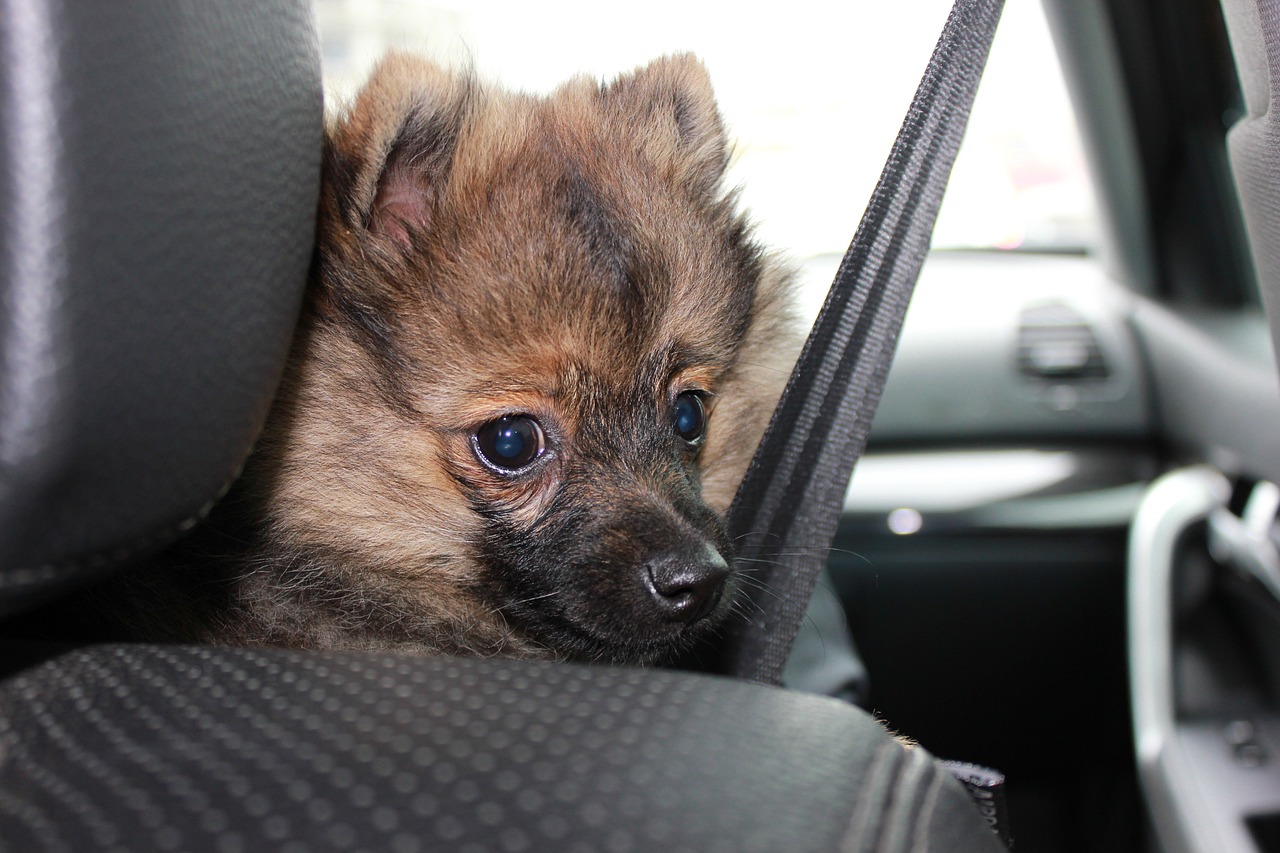
Emergency Procedures
When it comes to flying drones, safety should always be your top priority. However, even the most experienced operators can find themselves in unexpected situations. That’s why having a solid understanding of is essential. Being prepared not only helps you regain control but also ensures the safety of bystanders and property. So, what should you do when things go awry? Let’s dive into some crucial steps you need to take.
First and foremost, you need to know how to handle loss of control. This can happen for various reasons, such as signal interference, battery failure, or even pilot error. In such cases, your immediate reaction is key. Try to remain calm and assess the situation. If you can still see your drone, attempt to regain control by gently maneuvering it back to a safe area. However, if you lose sight of your drone or it starts to behave erratically, it’s best to initiate an emergency landing. Most drones come equipped with a return-to-home feature that can help you bring it back safely. Just remember, the primary aim is to avoid crashing into people or property.
Another critical aspect of emergency procedures is knowing how to report accidents. In the unfortunate event that your drone causes damage or injures someone, it’s essential to act responsibly. Start by ensuring everyone is safe and check for any injuries. If there are injuries, call emergency services immediately. After that, gather as much information as possible about the incident. This includes taking photos of the scene, noting the time and location, and collecting contact information from any witnesses. Reporting the incident to the appropriate authorities is also crucial, as it helps maintain accountability and transparency. Failure to report could lead to legal repercussions, so don’t overlook this step.
To help you remember the key procedures, here’s a quick summary:
| Emergency Situation | Action Required |
|---|---|
| Loss of Control | Attempt to regain control or activate return-to-home feature. |
| Accident Involving Injury | Call emergency services and ensure safety first. |
| Property Damage | Document the scene and report to authorities. |
In summary, being prepared for emergencies is a significant part of responsible drone operation. By understanding how to handle loss of control and knowing the right steps to take in case of an accident, you can significantly reduce risks and contribute to a safer flying environment. Always keep these procedures in mind, and you’ll be well-equipped to handle any situation that comes your way.
- What should I do if my drone loses connection? - Try to regain control using the remote or activate the return-to-home feature.
- How do I report a drone accident? - Gather details about the incident, take photos, and contact the relevant authorities.
- Are there legal consequences for not reporting an accident? - Yes, failing to report can lead to legal issues, so always document and report incidents.

Loss of Control
Imagine you're piloting your drone smoothly, capturing breathtaking aerial views, when suddenly, it starts to drift away. Panic sets in, right? is one of the most alarming situations a drone operator can face, but understanding how to manage it can save your drone—and possibly prevent accidents. First and foremost, it's essential to remain calm. Panicking can lead to hasty decisions that might worsen the situation. Instead, take a deep breath and assess the circumstances.
There are several common causes of loss of control, including interference from other electronic devices, low battery levels, or unexpected environmental factors like strong winds. Each of these factors can impact your drone's stability and responsiveness. For instance, if you're flying in an area with a lot of Wi-Fi signals or other drones, interference can disrupt your control signal. In such scenarios, it’s crucial to have a plan in place. Here’s what you can do:
- Check Your Connection: Ensure that your remote control is properly connected to the drone. If there's a communication failure, try to re-establish the link.
- Use Return-to-Home (RTH): Most drones come equipped with a fail-safe feature that allows them to return to their takeoff point automatically when they lose connection. Familiarize yourself with this feature before flying.
- Emergency Landing: If you cannot regain control, prepare for an emergency landing in a safe area. Look for open spaces free from obstacles and people.
Additionally, understanding your drone's flight modes can be a game-changer. Many drones have different settings that can assist in regaining control. For example, switching to a more stable flight mode can help if you're caught in turbulent conditions. This is similar to switching gears in a car when driving on a slippery road; it helps you maintain control of your vehicle.
Finally, after you've successfully landed your drone, take some time to analyze what went wrong. Did the battery die unexpectedly? Was the weather worse than anticipated? Understanding the root cause of the loss of control can help you prepare better for future flights. Keeping a flight log can also be beneficial. Documenting each flight, including conditions and any issues faced, can provide valuable insights over time.
In conclusion, while the loss of control can be a daunting experience, being prepared with strategies and knowledge can help you handle the situation effectively. Remember, the key is to stay calm and act decisively. Your drone adventures should be enjoyable and, above all, safe!
Q: What should I do if my drone loses connection?
A: Stay calm, check your connection, and use the return-to-home feature if available. If that fails, prepare for an emergency landing in a safe area.
Q: How can I prevent loss of control?
A: Always conduct pre-flight checks, ensure your battery is fully charged, and avoid flying in areas with high electronic interference or poor weather conditions.
Q: What are the signs of low battery during a flight?
A: Your drone may start to behave erratically, such as descending quickly or losing altitude. Many drones will also alert you with a warning signal.
Q: Is it safe to fly in windy conditions?
A: It depends on your drone's specifications. Always consult your user manual, as some drones are better equipped to handle wind than others. When in doubt, it's best to avoid flying in strong winds.
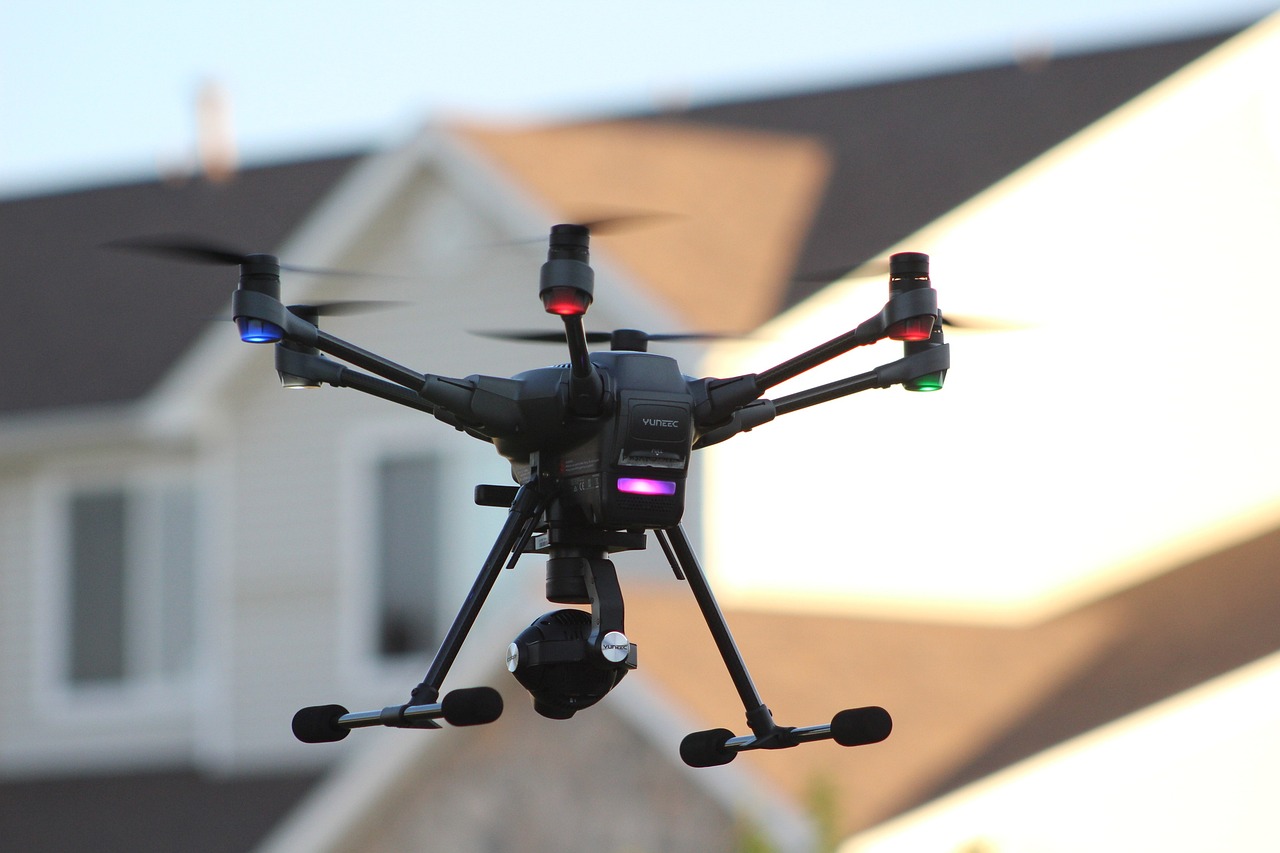
Accident Reporting
When it comes to operating drones, accidents can happen, and being prepared to handle them is crucial. is not just a legal obligation; it’s also a critical step in improving safety for everyone involved. Imagine you’re out flying your drone on a beautiful sunny day, and suddenly, it loses connection and crashes into a nearby park. What do you do next? First, it’s important to remain calm and assess the situation. Are there any injuries? Is there damage to property? Understanding how to report an accident properly can make a world of difference.
In the unfortunate event of an accident, there are a few key steps you should follow:
- Ensure Safety: Before anything else, check if anyone is injured. If there are injuries, call emergency services immediately.
- Document the Scene: Take photos of the accident site, the drone, and any damage caused. This documentation will be invaluable for reporting purposes.
- Gather Information: Collect the contact details of any witnesses and, if applicable, the owners of any damaged property. This can help clarify the situation later.
- Report to Authorities: Depending on your jurisdiction, you may be required to report the accident to local authorities or aviation regulators. Make sure you know the regulations that apply to your area.
After you’ve taken care of immediate concerns, it’s time to file a formal report. This report should include:
| Information Required | Description |
|---|---|
| Date and Time | The exact date and time of the accident. |
| Location | The specific location where the accident occurred. |
| Drone Details | Model, serial number, and any modifications made. |
| Incident Description | A detailed account of what happened leading up to the accident. |
| Injuries or Damages | Any injuries sustained and damages caused to property. |
Filing a report can seem daunting, but remember that it is essential for accountability and can help prevent future accidents. By sharing your experience, you contribute to a safer environment for all drone operators and the public. Plus, it’s a good way to reflect on what went wrong and how you can improve your flying practices in the future.
Finally, keep in mind that many drone manufacturers also have their own reporting procedures, especially if the accident involves malfunctioning equipment. Always check the manufacturer’s guidelines to see if you need to report the incident to them as well. In this way, you not only fulfill your legal obligations but also help improve the technology for everyone.
Q: What should I do if my drone crashes into someone else's property?
A: First, ensure that no one is injured. Then, document the situation, gather information from witnesses, and report the incident to the property owner and local authorities as needed.
Q: Is it necessary to report minor accidents?
A: While it may not be legally required, reporting even minor accidents can help you learn from the experience and improve safety practices.
Q: What information do I need to provide when reporting an accident?
A: You should provide details such as the date and time of the incident, location, drone specifications, a description of the incident, and any injuries or damages that occurred.
Frequently Asked Questions
- What are the key regulations I need to know before flying a drone?
Before taking to the skies, it's crucial to familiarize yourself with local and national drone regulations. This includes understanding airspace restrictions, altitude limits, and no-fly zones. Always check for any specific rules that apply in your area, as they can vary significantly.
- How can I ensure my drone is safe to fly?
Conducting thorough pre-flight safety checks is essential. Inspect your drone's equipment, including batteries, propellers, and cameras. Make sure everything is in good condition and functioning properly before you launch. Regular maintenance can prevent accidents and enhance your flying experience.
- What should I do if my drone loses control?
If you find yourself in a situation where your drone loses control, stay calm! Try to regain control using the remote. If that fails, initiate a safe landing procedure. Knowing your emergency procedures ahead of time can make all the difference in preventing accidents.
- How do I respect the privacy of others while flying my drone?
Respecting privacy is not just a legal obligation; it's also an ethical one. Always be aware of your surroundings and avoid flying over private properties without permission. If you're unsure, it's best to err on the side of caution and keep your drone at a distance from people and homes.
- What are the best practices for flying in different weather conditions?
Weather can greatly affect your drone's performance. Always check the forecast before flying. Avoid flying in high winds, rain, or fog, as these conditions can impair your control and visibility. If the weather looks questionable, it's better to postpone your flight.
- How do I report a drone accident?
If an accident occurs, it's vital to report it promptly. Document the incident with photos and notes, and notify local authorities if necessary. Being accountable helps improve safety standards and contributes to responsible drone operation.



















